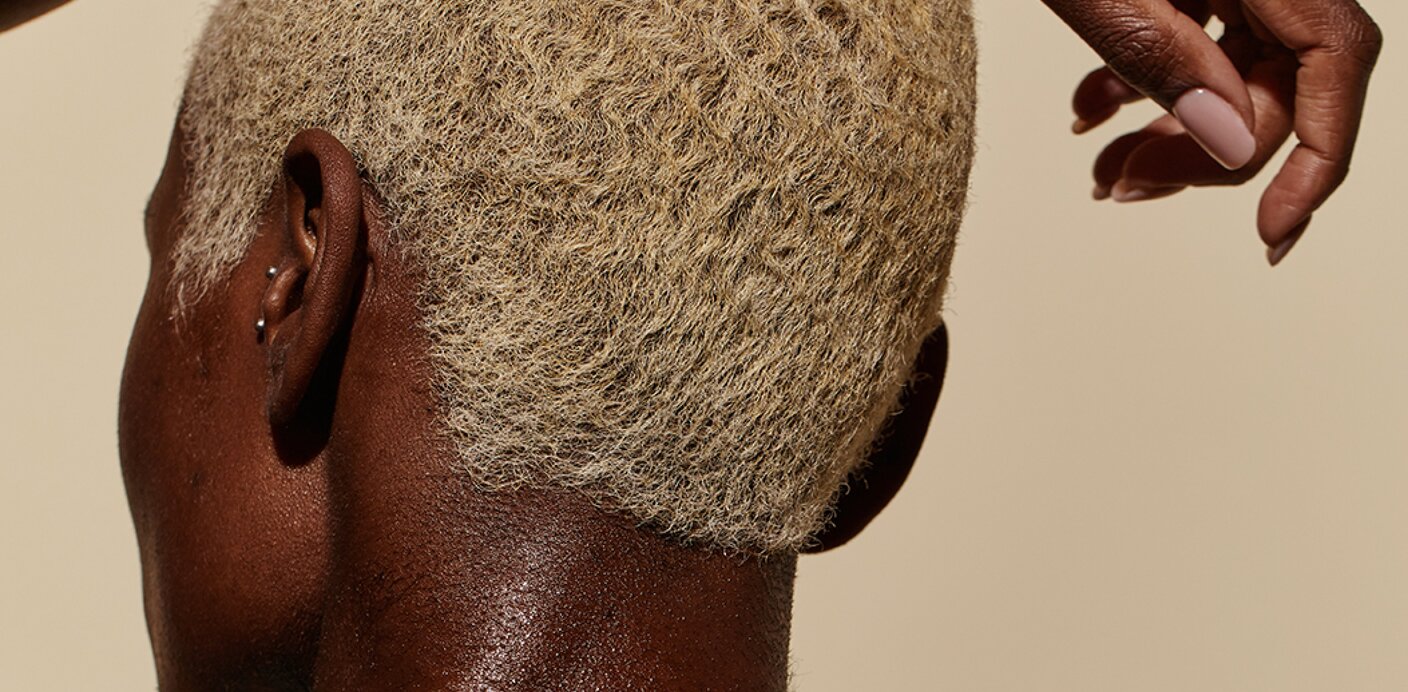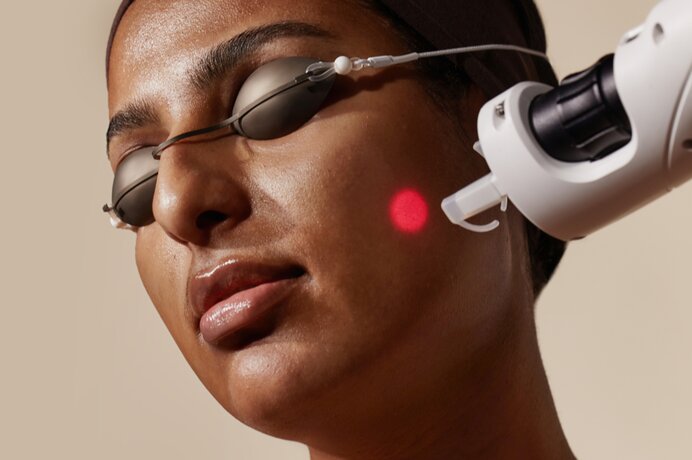Terms

DOCTOR'S NOTE
All About Melanin
An education on the biological pigment responsible for skin tone and how it should affect your approach to skincare
Understanding your complexion is necessary when establishing your personal skincare routine and having a knowledge of melanin and your skin tone go hand in hand.
Responsible for biological pigment, melanin determines our hair color, eye color, and skin tone. Depending on genetics, some people make more melanin than others and we always keep that in mind when developing new products and creating new treatments and protocols at Skin Laundry.
Read on for our Skin Laundry guide to melanin.
What is Melanin?
Melanin is a biological pigment responsible for hair and eye color and skin tone. Melanin pigments are produced by a group of cells known as melanocytes. All human beings have roughly the same number of melanocytes, but the amount of melanin produced by these melanocytes varies. The more melanin you produce, the darker your eyes, hair, and skin will be. Freckles are a result of clusters of melanocytes.
There are two types of melanin responsible for pigmentation.
Eumelanin. There are two types of eumelanin: black and brown. Eumelanin is responsible for dark colors in skin, eyes, and hair. People with brown or black hair have varying amounts of brown and black eumelanin. When there’s no black eumelanin and a small amount of brown eumelanin, it results in blonde hair.
Pheomelanin. This type of melanin pigments your lips, nipples, and other pinkish parts of your body. People who have equal parts eumelanin and pheomelanin have red hair.
Your unique combination of eumelanin and pheomelanin is responsible for your skin, hair, and eye color.
The amount of natural melanin in your body, produced in the basal layer (the deepest layer) of the epidermis, is determined by genetics. However, there are some other factors that can influence the production of melanin, including:
• Exposure to UV light
• Inflammation
• Hormones
• Age
• Skin pigment disorders
What Does Melanin Do for Your Skin?
Melanin, the pigment responsible for the color of your skin, eyes and hair, plays a crucial role in your body’s defense system. Beyond providing pigmentation, melanin acts as a natural shield, absorbing harmful ultraviolet (UV) rays from the sun to protect your cells from damage. This UV protection helps reduce the risk of skin cancer and premature aging, making melanin essential for maintaining healthy skin. Understanding melanin’s functions highlights its importance in safeguarding your body from environmental stressors.
What is Hyperpigmentation?
Hyperpigmentation–including sun spots, melasma, and post-inflammatory hyperpigmentation–is caused by an increase in melanin. A number of factors can trigger an increase in melanin production, but the main ones are sun exposure, hormonal influences, age and skin injuries, or inflammation. Those with darker skin tones and skin types IV or greater are naturally more susceptible to hyperpigmentation.
Read more about skin tones here.

What is the Best Treatment for Hyperpigmentation in Melanated Skin?
The Skin Laundry Signature Facial is safe for all skin tones as the wavelength of this laser essentially bypasses the healthy melanin in the epidermis, targeting the deeper layers of the skin. Learn more about our treatments here.

What Skin Laundry products are best for rosacea?
STEP 1 - CLEANSE
Skin Laundry Hydrating Gentle Cleanser
This oil-free milky gel cleanser gently washes away dirt and impurities, leaving the skin cleansed and hydrated. Formulated with Niacinamide, Vitamin B5, and Watermelon Extract, this cleanser is rich in antioxidants and helps balance, soothe, calm, and strengthen the skin's surface.
STEP 2 - MOISTURIZE
Skin Laundry Vitamin B5 Antioxidant Moisturizer
This super lightweight moisturizer helps provide long-lasting hydration and supports a healthy skin barrier. Formulated with Vitamin B5, Hyaluronic Acid, and Camellia Japonica Flower Extract, this daily moisturizer provides powerful antioxidant protection and leaves the skin with a soft matte finish.
STEP 3 – TREAT
Formulated with a 13.5% blend of Alpha Arbutin and Vitamin C, this serum provides powerful antioxidant protection, boosts collagen production, and helps to brighten discoloration for a more radiant complexion while preventing further UV-related damage.
ALTERNATE WITH
Skin Laundry Tranexamic Acid Serum
Improve the appearance of dark spots, discoloration, and redness with our highly concentrated Tranexamic Acid Serum. Formulated with 3% Tranexamic Acid, 1% Niacinamide, and EndiMoist 4HA, this advanced serum helps target melasma and hyperpigmentation, reducing the appearance of uneven skin patches and dark spots and relieving rosacea.
STEP 4 – USE UV PROTECTION
Sun Defense Broad Spectrum SPF 30 Sunscreen
This lightweight, non-greasy, mousse-to-cream mineral sunscreen provides broad-spectrum protection while leaving little to no white residue or sticky feeling on the skin. Formulated with Zinc Oxide to deflect UV rays, moisturizing Hemisqualane, soothing Bisabolol, and Vitamin E, a powerful antioxidant, this daily sunscreen is your go-to skincare essential.
What are the best treatments for rosacea?
If you suffer from rosacea it is best to avoid harsh treatments, including chemical acid peels and physical exfoliation, which can trigger and exacerbate symptoms.
One treatment that has been proven to help manage rosacea is the Skin Laundry Laser Facial, which has been found to be effective and safe for the treatment of vascular and inflammatory lesions of rosacea for all skin tones, reducing redness without downtime.
Book your first Signature Laser Facial
The Resurfacing Facial has also been proven to be safe for those with rosacea and effective at calming redness, smoothing the skin and improving skin tone without downtime.
Learn more about our Facials
How To Choose a Sunscreen (and Why You Should Choose Ours)
The American Academy of Dermatology recommends the following when choosing a sunscreen:
1. Make sure the label says “broad spectrum.” The words broad spectrum mean that the sunscreen will protect your skin from both UVA and UVB rays.
2. Use an SPF 30 or higher, which can block about 97 percent of UVB rays.
Shop our line of dermatologist-approved skincare
Which products are best for treating Hyperpigmentation?
Formulated with 3% Tranexamic Acid, 1% Niacinamide, and EndiMoist 4HA, our Tranexamic Acid Serum improves the appearance of dark spots and discoloration. The potent blend also helps target melasma and hyperpigmentation, reducing the appearance of uneven skin patches and dark spots.
Tranexamic Acid is an ingredient derived from the amino acid lysine that prevents melasma by inhibiting the development of skin hyperpigmentation and reducing tyrosinase activity (the enzyme that catalyzes melanin production). It also has comparative benefits to other dark spot-diminishing creams (such as Hydroquinone) but is less irritating and safe for all skin tones.
To find out more about Tranexamic Acid here.
Shop our full line of dermatologist-approved product here.
Doctor's Note
No matter what your skin tone, you should use a broad spectrum sunscreen with an SPF30 or higher every day to protect your skin from harmful UV rays and prevent sun spots and hyperpigmentation.
Additional Reading
Your Shopping Bag
Your shopping bag is empty











